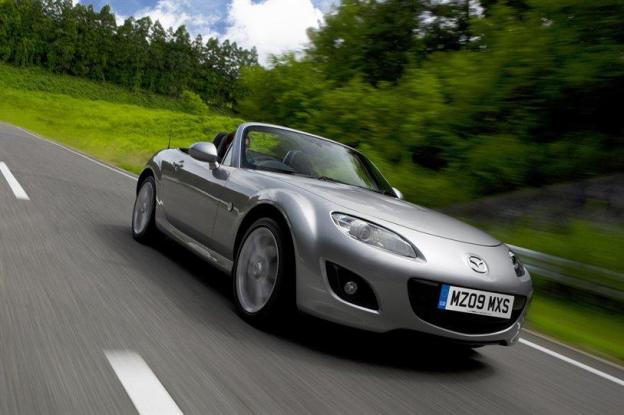
Many an automotive journalist carries a soft spot for the Mazda MX-5, also known as the Miata. Its lightweight construction, front-engine, and rear-wheel-drive layout made it one of the most exciting cars to drive since it began rolling off the assembly line at the tail end of the 1980s – a legacy that carries on even today. Essentially, it was the Japanese’s take on the fabled two-seater British sports cars of swingin’ sixties, like the Lotus Elan, Triumph Spitfire, and the mother of them all, the Jaguar E-Type.
So bearing that in mind, there is a lot of buzz, excitement, and expectation surrounding the next generation of Miata – and rightfully so. Last May, Mazda Motors and Fiat Group Automobiles S.P.A. unveiled a cooperation program for a next-generation roadster. This roadster would be co-developed with Alfa Romeo, be based on Mazda’s next-generation MX-5 rear-wheel drive architecture, and manufactured in the Japanese automaker’s Hiroshima plant. There is also a little tidbit added by What Car? which suggest that – on top of an expected weight drop of around 220 pounds for what is already an extremely lightweight frame (2,200 pounds) – Mazda will add a Mini-like level of vehicle customization similar to what can been seen in the Mini Cooper and Fiat 500, giving consumers the option to trim, style, and deck out their Miatas in a way that has, up until now, been nonexistent.
And with past and present Mazda MX-5s so near and dear to their owner’s hearts, we anticipate that bond will be further solidified between man and machine once owners are encouraged and given license to truly customize their cars.
For now, Miata lovers will need to console themselves with the current crop on offer, but that doesn’t mean they can’t get excited over what’s to come. As it stands, the 2012 Miata is available in two engine types: a 1.8-liter inline four-cylinder (Europe only) and a 2.0-liter variation (U.S.) which pumps out an impressive 167 horsepower and 140 pound feet of torque. For the upcoming venture, power is said to derive from a 1.3-liter turbocharged four-cylinder that would see a boost in horsepower to 200. That might not seem like much right off the bat, but coupled with the Miata’s supple handling and feather-like frame, this recipe for roadster success is practically complete.
According to What Car? The official arrival date has yet to be confirmed, but that hasn’t stopped the site from predicted 2015 as a possible debut date. We’ll definitely be keeping a close eye on how this develops, so watch this space.


